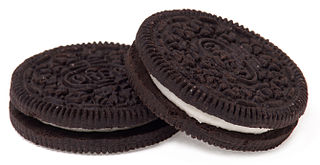Exploring the Scientific Method
Students in science classes often start off the first chapter with that familiar step-by-step flow chart showing how scientists develop a hypothesis, test a hypothesis, gather data, and then draw conclusions. These chapters often include an experiment where students follow directions and answer a question.
Unfortunately, these experiments often don't do justice to the creative process of designing a method to test a hypothesis, because the method is provided for them. The development of an authentic way to test a hypothesis requires students use logic and communication, as well as flexibility with changing a design that doesn't seem to work. Inquiry labs, or open-ended labs, allow students to explore science, answer a question, or test a hypothesis without the traditional recipe tied to traditional labs. Inquiry labs are a great way to start a chapter on the scientific method, or start any science class.
Teachers are sometimes nervous to conduct inquiry labs due to equipment availability or safety concerns. However, inquiry labs can be cheap and fun for the students. The following list gives some ideas for beginning inquiry with a list of equipment you could use, but like the labs themselves, no other instructions are given. Students must figure out how to answer the question using logic and data gathering. Each lab starts with a simple question....
1. Oreo Cookie Challenge
Do Double-Stuff Oreos actually have double the stuffing or regular Oreos?
Equipment: Scale, Beaker, Rulers, *Oreos and Double Stuff Oreos
*you may need to set some guidelines about eating the experiment items
2. Are Bounty paper towels more absorbant than generic paper towels?
Equipment: Beaker, Graduated Cylinder, Scale, Rules, Water, Two types of towels
Dissecting trays or pans might help for catching water.
3. How does surface area of a candy affect how quickly it dissolves in water?
Equipment: smarties or sweet tarts (or any sugary dissolvable candy that can be cut into smaller portions), water, ruler, scale, *scalpel or blade, timer
*requires safety discussion beforehand
4. Many gum brands claim that they have the longest lasting flavor. Design and conduct an experiment to determine what type of gum has the longest lasting flavor.
clock, a variety of different types of gum
5. Which type of polish remover works best, acetone or acetone free?
fingernail polish, polish remover (2 types), dishes, lids, or other surfaces to paint on, variety is good so that students must consider the surface when conducting the experiment.
Assessment
Remember that the answer to the question is not as important as the process, and in fact, some might not have an exact correct answer. Students should document their process, instructors should write guidelines on the board and have students turn in their lab report with data gathered and an answer to the question. It is important to circulate around the room and offer suggestions and criticisms for the student designed experiments.
Sample Guidelines
On a single paper for your group write:
1) Experiment Question
2) Your hypothesis (include reasoning)
3) Your experimental design *
4) Data collected
5) Your Conclusions
*You may want to withhold experimental equipment until after students have presented a valid design, this forces students to really think about how they will test rather than just grabbing stuff and jumping right in.
Extension
Now that students have a feel for consumer testing, ask them to evaluate claims they see on commercials, possibly design and conduct an experiment to test those claims.
Related Resources
Variables with Simpsons – read stories involving characters from the Simpsons and determine the independent and dependent variables
Independent Variables – read a short sentence of science experiment and determine the variables
Investigation – Heat Storage and Loss – Use a jar and different types of insulation to explore how heat is lost and which materials are better insulators (Key, TpT)
Plop Plop Fiz Fiz – measure the rate of dissolving in alka-seltzer tablets in both hot and cold water (a basic experiment for introducing the scientific method)
